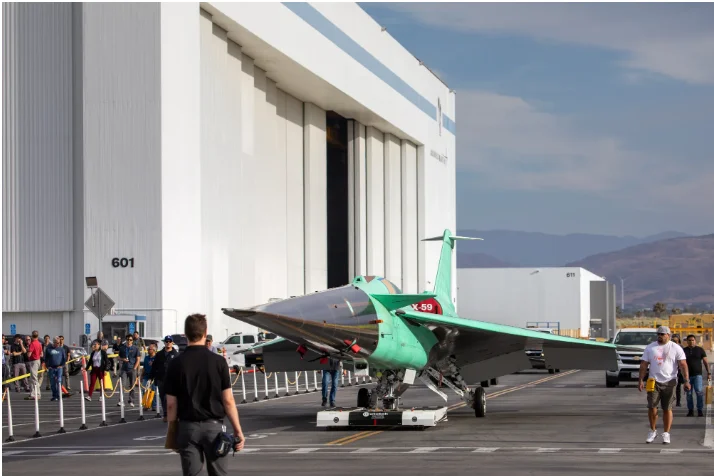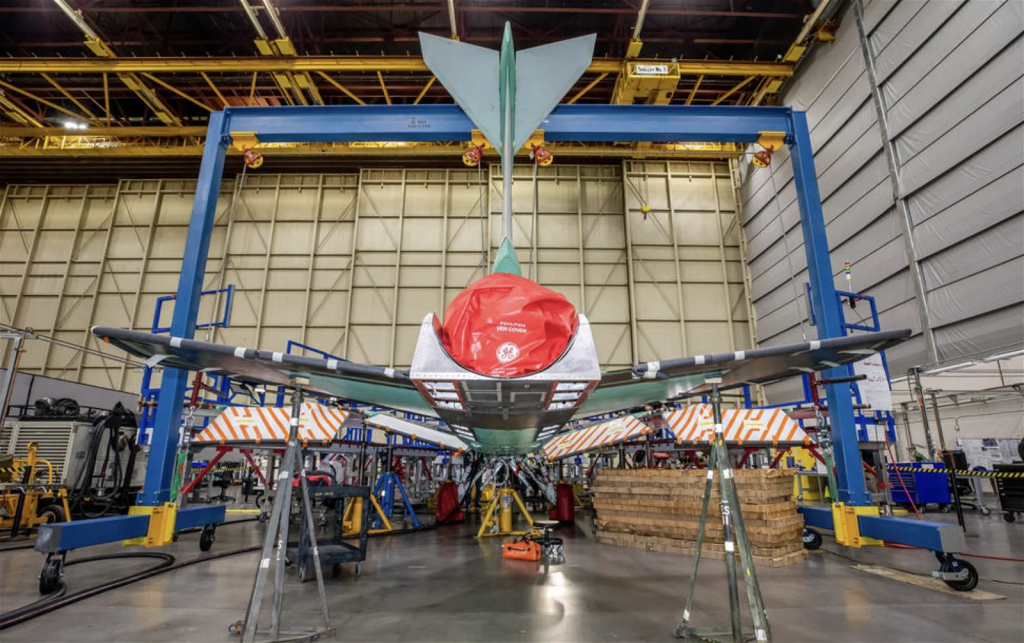Carding 4 Carders
Professional
X-59 opens a new page in the history of aviation.
NASA's experimental X-59 aircraft, designed for fast and low-noise flight over land, is preparing for its first flight in 2024. This vehicle is designed to travel faster than the speed of sound, while reducing the intensity of the resulting supersonic explosions. These restrictions have previously severely restricted the use of supersonic military and commercial vessels.
The X-59 was created by the Lockheed-Martin Skunk Works engineering group, which is historically known for developing advanced aircraft for a variety of applications. The first test flight of the X-59 was planned for this year, but ongoing testing and experiments at the company's Palmdale, California facility led to a delay. The exact date in 2024 is now expected to be announced shortly.
As the speed of the plane approaches the speed of sound, the compressing waves formed in front of the plane get closer to each other. When an airplane "breaks through" the sound barrier, these waves abruptly compress, causing a loud explosion, often called a supersonic explosion. Hopes of reducing these explosions from a loud bang to the equivalent of closing a car door led NASA and Skunk Works to work on an experimental X-59 aircraft.

It is worth noting that the X-59 is not a completely new design. Instead, it is assembled from the systems and components of other existing aircraft. For example, the X-59 chassis was taken from the F-16, and the life support systems were taken from the F-15. After critical ground tests are completed, it will be moved from the assembly facility to the runway for structural testing.

After liftoff, the spacecraft is expected to fly over "multiple communities" to collect data on people's reactions to significantly reduced supersonic explosions. NASA will then share its findings with domestic and international regulators "with a view to possibly adjusting the rules that currently prohibit commercial supersonic flights over land."
The goal of achieving supersonic flight without strong explosions looks tempting, and NASA says that their team working on this project is aiming for the first flight in 2024.
NASA's experimental X-59 aircraft, designed for fast and low-noise flight over land, is preparing for its first flight in 2024. This vehicle is designed to travel faster than the speed of sound, while reducing the intensity of the resulting supersonic explosions. These restrictions have previously severely restricted the use of supersonic military and commercial vessels.
The X-59 was created by the Lockheed-Martin Skunk Works engineering group, which is historically known for developing advanced aircraft for a variety of applications. The first test flight of the X-59 was planned for this year, but ongoing testing and experiments at the company's Palmdale, California facility led to a delay. The exact date in 2024 is now expected to be announced shortly.
As the speed of the plane approaches the speed of sound, the compressing waves formed in front of the plane get closer to each other. When an airplane "breaks through" the sound barrier, these waves abruptly compress, causing a loud explosion, often called a supersonic explosion. Hopes of reducing these explosions from a loud bang to the equivalent of closing a car door led NASA and Skunk Works to work on an experimental X-59 aircraft.

It is worth noting that the X-59 is not a completely new design. Instead, it is assembled from the systems and components of other existing aircraft. For example, the X-59 chassis was taken from the F-16, and the life support systems were taken from the F-15. After critical ground tests are completed, it will be moved from the assembly facility to the runway for structural testing.

After liftoff, the spacecraft is expected to fly over "multiple communities" to collect data on people's reactions to significantly reduced supersonic explosions. NASA will then share its findings with domestic and international regulators "with a view to possibly adjusting the rules that currently prohibit commercial supersonic flights over land."
The goal of achieving supersonic flight without strong explosions looks tempting, and NASA says that their team working on this project is aiming for the first flight in 2024.
